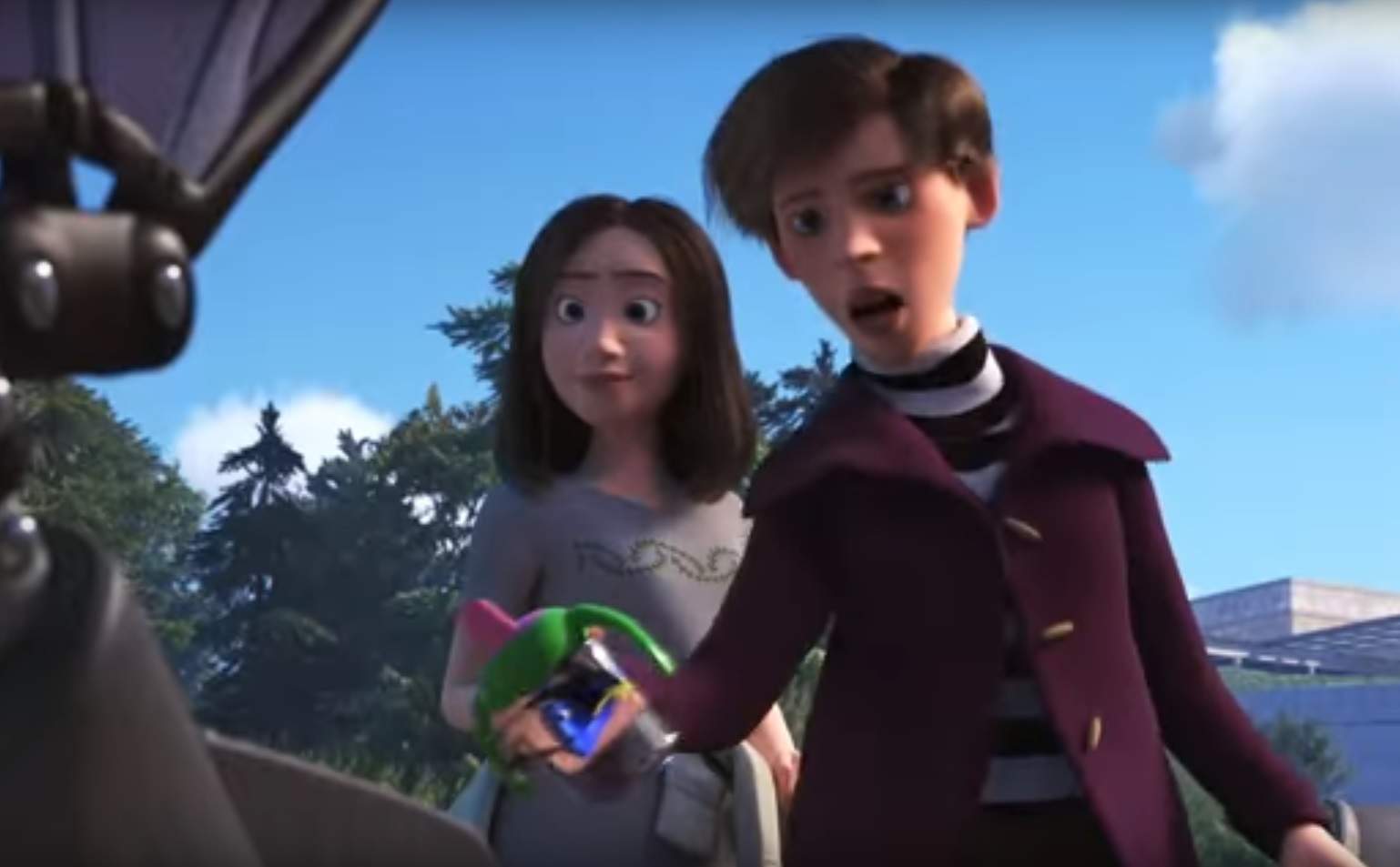
On first viewing, I managed to completely miss the supposed lesbians in the much-freaked-out-about Finding Dory trailer.
Initially, I stared at Pixar’s latest ad for the Finding Nemo sequel with – I think – the same glazed expression (and definitely the same glazed attitude) I reserve for pretty much anything viral and adorable.
“Oh cute,” I thought, without any intonation, before getting on with my day.
When the internet began to have #opinions on the possible same-sex parents depicted in the trailer, I panicked for a short while about how often I’m oblivious to lesbians in things, then re-watched the two and a half minutes of animated fish, hype and feelings.
And yes, there they were for probably two seconds: two women with a pram.
One of them had short hair, which I guess was the cue for a thousand champagne bottles – somewhere in my mind – to jizz forth simultaneously at the thought of Disney’s first gay couple coming to a screen near me this summer.
The lesbianism of these characters is, of course, pure speculation. Although the combination of short-haired woman visibility and the fact that the film’s lead is voiced by Ellen DeGeneres does point towards our old friend the Gay Agenda having imposed itself on Disney. And good for it.
Plus, Disney lesbians becoming a thing the same week a kid finds crystal meth in a Kinder egg is sure to have boring, terrible parents up in arms (whatever that actually means) about their children’s moral and physical wellbeing. The internet is quite big, and if someone on it hasn’t already accused the Gay Agenda of putting meth in Kinder eggs, I’d be mightily surprised.
But after mentally celebrating a genuine (completely non-meth-related) win for the Gay Agenda, it began to strike me as ludicrous that – in 2016 – children’s films and TV programmes aren’t brimming with LGBT characters. Why should I, and others like me, have to feel speculatively grateful that Pixar has deigned to include characters who aren’t 1950s picture perfect hetero clones? All the fuss over the slightest hint of lesbians in Finding Dory, when – presumably – there aren’t even any trans crabs, or bisexual belugas, or magnificent seahorse drag queens.
The closest thing to a gay couple in any of the many cartoons I watched as a kid was Ren and Stimpy. Stimpy is a cat who, in one episode, gives birth to a fart. Ren is a psychotic Chihuahua. They share a bed. Their relationship is wildly dysfunctional.
I wouldn’t go as far as to say that The Ren & Stimpy Show, which I loved, gave me fucked up ideas about same-sex relationships. In fact, I’m not sure it ever registered in my five-year-old mind that the dumb cat and emotionally unstable dog were an item. But perhaps that’s the problem. Maybe if my favourite children’s shows had included even one out and happy queer person, I wouldn’t have been so mystified and repulsed by my own sexuality.
LGBT representation in children’s entertainment has been negligible for so long that, once it comes along, we’re almost forced to applaud like mad at a company like Pixar finally giving credence to a relationship that would bother the Westboro Baptist Church.
It’s overwhelmingly positive that (if Finding Dory does actually have lesbians in it) some long-awaited queer visibility has surfaced. But Pixar can’t be lauded as heroes for, all of a sudden, being fine with an entire section of the world’s population.
The Finding Dory lesbian hoo-ha happens to coincide quite nicely with a campaign to, in the next Frozen film, give Princess Elsa a girlfriend. Gay Agenda aside for a second, if a Disney Princess gets a girlfriend before I do, I will (I have not figured out the logistics of this yet) burn down my Tinder profile.
And, in the probably rather unlikely event that Elsa does get a girlfriend, let’s not forget that the world is full of gay and bi women, and Pixar didn’t retrospectively invent queerness.
When it comes to the Finding Dory trailer, Perhaps my initial, atonal, response of, “Oh, cute,” was correct after all.





